
Mobile gaming is a big business. With smartphones becoming more capable every year and cloud gaming improving, gamers are looking at portable gaming consoles with increased interest. The Nintendo Switch OLED, Logitech G Cloud, and Steamdeck are just a few choices out on the market, but have one thing in common: they are limited to being on a non-cellular connection. With 5G becoming increasingly available in larger cities, Razer looked to do something different and they teamed up with Verizon to make it happen: enter the Razer Edge 5G.
Estimated reading time: 22 minutes
The Razer Edge 5G has been in reviewers’ hands for several weeks now, and I’ve been looking at opinions across the interwebs regarding this new mobile gaming console. There doesn’t seem to be a real consensus on the Razer Edge 5G. Many users do not see the point of the device, and even our own Jason Bouwmeester provides an argument for finding a more economical path to a handheld gaming console.
While there are those, who can’t make sense of the Razer Edge 5G, an equal number of people think it’s fantastic. I have to admit, during my testing with the Edge 5G, I bounced back and forth between these two trains of thought, and I still have mixed feelings about it all. I am going to preface the rest of the review with this disclaimer. I am not a hardcore gamer. I am a casual gamer who likes gaming at his own pace.
However, I have a 12-year-old son who will gladly play games until the rooster crows, and between him and me, we ran the Razer Edge 5G through its paces. You may disagree with my thoughts on this device or agree. I can honestly say that I see everyone’s point of view about the Edge 5G, and no one is wrong. This will come down to what you’re comfortable spending on such a device and what’s important to you.
This is one of the most extended intros to a review I have ever done, so let’s get into it!
It is important to note that the Razer Edge comes in the 5G version we reviewed here and a Wi-Fi version. The Verizon 5G version is priced at $599.99 (not including a 5G plan), and the Wi-Fi version is priced at $399.99. I have included specifications for both below to see the differences.
Table of contents
The Quick Take
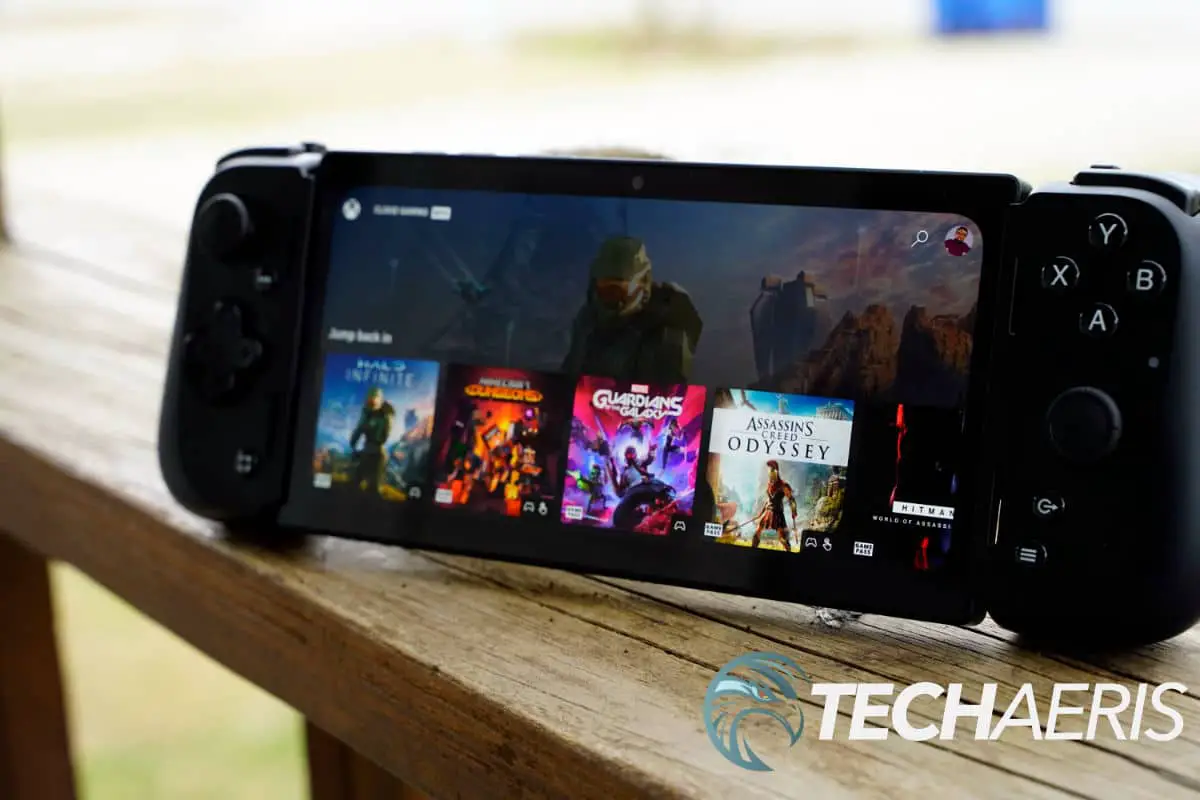
Many other review sites advise you not to buy the Razer Edge 5G. Other reviewers see this purchase as personal, meaning the reader buys it for themselves. I won’t say don’t purchase the Edge 5G because everyone’s circumstances and needs differ. However, there are some things you must consider before buying the Edge 5G.
- Do I need 5G, or is Wi-Fi good enough?
- How far out will Razer support the Edge 5G with Android updates?
- Do I even have 5G in my area? And how good is it?
- Is buying the Razer Kishi V2 and using my phone more economical?
- Are the headphone jack and Razer HyperSense Haptics something that will make my gaming a better experience?
- The Kishi V2 Pro is not as ergonomic as an actual controller. Will I be OK with that?
- How do I feel about the gonzo bezels?
- Will the fan noise bother me, and will the lack of fan control be a problem?
- Who am I buying this for?
From what I have seen, reviewers have given you plenty of reasons NOT to buy the Razer Edge 5G. I will provide you with at least one reason TO buy it. My 12-year-old son doesn’t have a phone and won’t get one for a few more years. For him, this is a great device to play console games on the run and a great addition to his Nintendo Switch. The Edge 5G is also a great gift idea; the Wi-Fi version won’t break the bank.
As the headline states, I have mixed feelings about the Razer Edge 5G. I see all of the pain points that gamers purchasing this unit for themselves have issues with. But the Edge 5G is equally compelling with its fantastic display, outstanding performance, fantastic speakers, and access to a vast library of cloud gaming.
My Quick Take is this: forgo the 5G variant and get the Wi-Fi version. 5G is still not as widely available as the carriers want you to believe. I struggled to find 5G around my areas, even where the maps said there was 5G. If you have a capable flagship smartphone and want to save even more money, get the Razer Kishi V2 and slap your phone in it (as our Senior Editor pointed out in another article). If you want the haptics and headphone jack of the V2 Pro, get the Edge Wi-Fi (heck, you can always tether it to your 5G smartphone if you’re out and about).
You might also consider that the Razer Edge 5G can be a dedicated gaming device without texting, phone calls, or unnecessary apps. With expandable storage (up to 2TB), you can install several Android games you like to play. You wouldn’t be able to do most of this with your flagship smartphone.
There are too many considerations to give a definitive yes or no here. Take inventory of what your needs are and base your purchase on that. If you’re basing your purchase on how the Edge 5G performs overall, it’s a fantastic performing mobile gaming console, and like all tech products; it comes with some pros and cons which vary based on your perspective.
Specifications
The Razer Edge 5G and Razer Edge Wi-Fi have the following features and specifications:
RAZER EDGE Wi-Fi | RAZER EDGE 5G | |
|---|---|---|
| MSRP | $399.99 | $599.99 |
| CHIPSET | Qualcomm Snapdragon G3x Gen 1 | Qualcomm Snapdragon G3x Gen 1 |
| SCREEN | 6.8” FHD+ (2400×1080) AMOLED 144Hz | 6.8” FHD+ (2400×1080) AMOLED 144Hz |
| RAM | 6 GB LPDDR5 | 8 GB LPDDR5 |
| STORAGE | Internal: 128 GB (UFS 3.1) External Memory Support: MicroSD (Up to 2 TB) | Internal: 128 GB (UFS 3.1) External Memory Support: MicroSD (Up to 2 TB) |
| AUDIO | 2-way speakers with 2 digital microphones THX Spatial Audio | 2-way speakers with 2 digital microphones Verizon Adaptative Sound |
| CAMERA | Front-facing: 5MP, 1080p @60fps | Front-facing: 5MP, 1080p @60fps |
| BATTERY | 5,000mAh | 5,000mAh |
| CONNECTIVITY | Wi-Fi 6E Bluetooth 5.2 USB Type C 3.5mm Headphone Jack (via controller) | Wi-Fi 6E 5G with Embedded SIM (eSIM) Bluetooth 5.2 USB Type C 3.5mm Headphone Jack (via controller) |
| ANTENNA | – | Sub 6, mmWave |
| BANDS | – | 5G, LTE, UMTS, Global LTE, LTE Cat 22 |
| DIMENSIONS | 260 x 85 x 11 mm | 260 x 85 x 11 mm |
| WEIGHT | 264 g (tablet only) 401 g (with a controller attached) | 264 g (tablet only) 401 g (with a controller attached) |
| CONTROLLER | Powered via USB-C 2 analog sticks 8 buttons 1 D-pad 2 triggers 2 bumpers 2 programmable buttons Razer HyperSense haptics | Powered via USB-C 2 analog sticks 8 buttons 1 D-pad 2 triggers 2 bumpers 2 programmable buttons Razer HyperSense haptics |
| CONTENT | Razer Edge Wi-Fi Razer Kishi V2 Pro | Razer Edge 5G Razer Kishi V2 Pro |
What’s In The Box
- Razer Edge 5G Tablet
- Razer Kishi V2 Pro
- USB-C to USB-C charging cable
- 45W Power Adapter (only comes with the 5G variant)
- Manuals and Documentation
- Razer Stickers
Design
While it seems the Razer Edge 5G is one device, it is actually two that work together. When I first heard about the Razer Edge, I thought it would be more akin to the Steamdeck or G Cloud, an all-in-one unit. So it was interesting to find out that Razer was using its popular Razer Kishi to pair up with a custom-made tablet-like device. So I broke the design section down to talk about both parts of the whole.
The Razer Kishi V2 Pro
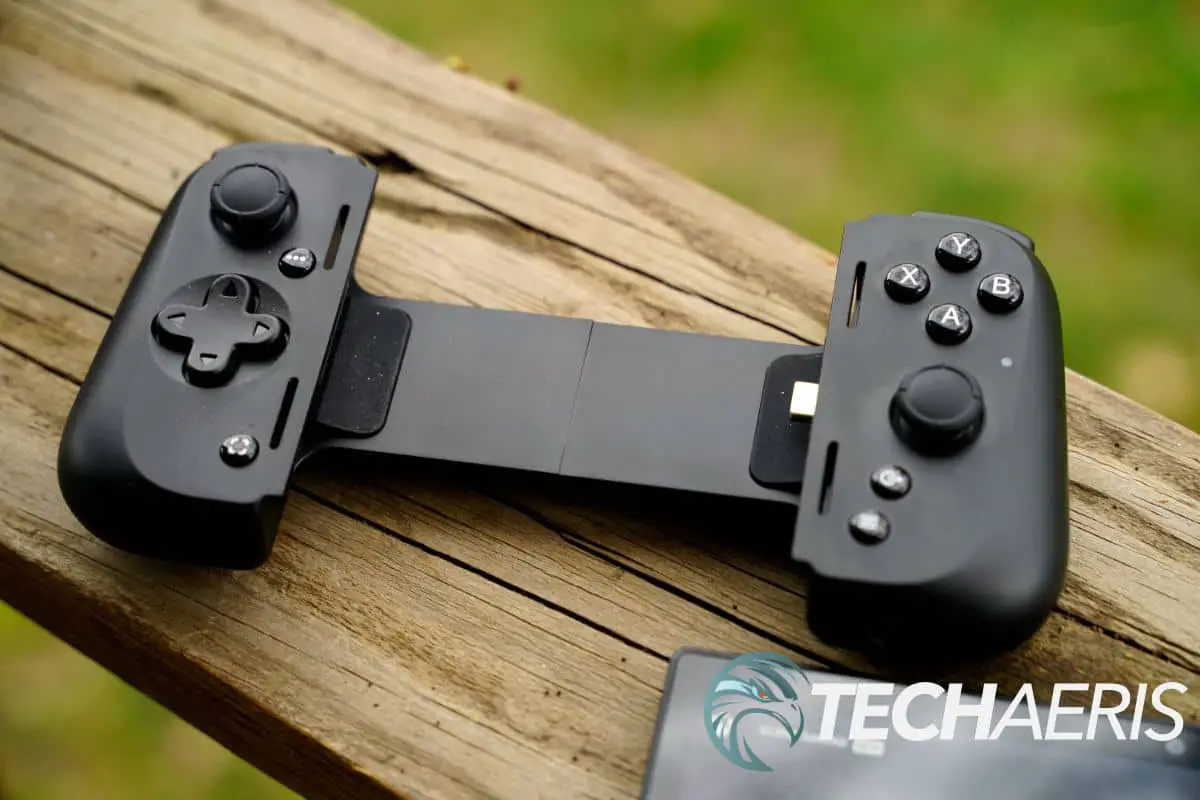
The Razer Kishi V2 Pro is nearly identical to the Razer Kishi V2 we reviewed in June 2022. There are a few differences, and in my opinion, they are significant differences that add a lot of value to the V2 Pro. First, let’s review the buttons and layout of this mobile controller.
- Console-Quality Controls – with microswitch buttons and d-pad, analog triggers, and programmable multifunction buttons
- Universal Fit with Extendable Bridge – for seamless compatibility with almost any Android phone
- Stream PC and Console Games – go beyond mobile gaming
- Optimized for Maximum performance – with ultra-low latency gameplay and passthrough charging
- Ergonomic Design – for a comfortable grip in a portable form factor
- Powered by the Razer Nexus app – for instant game discovery and management
- Two analog thumbsticks with clickable buttons (L3/R3)
- One mechanical D-pad
- ABXY face buttons
- Two triggers (L2/R2)
- Two bumpers (L1/R1)
- Two programmable multifunction buttons (M1/M2)
- Menu and Options buttons (labeled Start and Select in some games)
- Share button (requires Razer Nexus)
- Ports
- USB-C plug for phone connection
- USB-C port for passthrough charging only
- AUX port for headphone use
- Charging indicator light
- Dimensions: 180.7 x 92.2 x 33.9mm
- Weight: 284g
If you’ve used the original Razer Kishi, you will notice some differences between the original and the V2 Pro. The Pro will be very familiar if you’re a Kishi V2 user. While the original Kishi was great for portability due to its collapsible design, the new design is far sturdier and nicer.
All the Kishi controllers have an Xbox-style button layout which works very well for me since I use Xbox as my primary gaming system. If you’re a Playstation or Nintendo Switch user, you may have a bit of a learning curve to overcome. But I imagine most gamers will be comfortable with the layout here.
The left side of the Kishi V2 Pro has one clickable analog stick, a microswitch D-Pad, an options button, and a share/streaming button. On the right side of the Kishi V2 Pro are your AXYB buttons, another clickable analog stick, the Razer Nexus button, and the hamburger menu button.
The top of each controller has a thin flange that extends over the bridge for holding your Razer Edge 5G in place while it’s connected. A connection/charging status LED is on the right-hand side below the AXYB buttons.
On the bottom edge of the right-hand grip is a USB-C passthrough charging port to charge your Razer Edge 5G while gaming. The AUX port is on the bottom edge of the left-hand grip, something new for the V2 Pro. The top edges of each handle are where you’ll find a trigger, bumper, and programmable multifunction button. The grips are slightly textured, which helps in holding the unit.
The Kishi V2 and V2 Pro are vastly improved over the original Kishi, but I still have one issue. I would have liked the grips to be slightly bigger with more of an Xbox controller feel. My hands are relatively large, and holding the V2 Pro for extended periods can become fatiguing. My son had no issues, but his hands are smaller than mine.
It is not part of the design, but I will include it here: the new Razer Hypersense Haptics on the V2 Pro. The original Kishi and the V2 do not have haptics, and I can confidently say that haptics is an excellent addition to the experience.
Overall, the Kishi V2 Pro is an excellent controller that Xbox users will be right at home with and other gamers can get used to. It’s an outstanding design, but the grips could be slightly oversized to better fit meaty mitts like mine.
The Razer Edge 5G Tablet
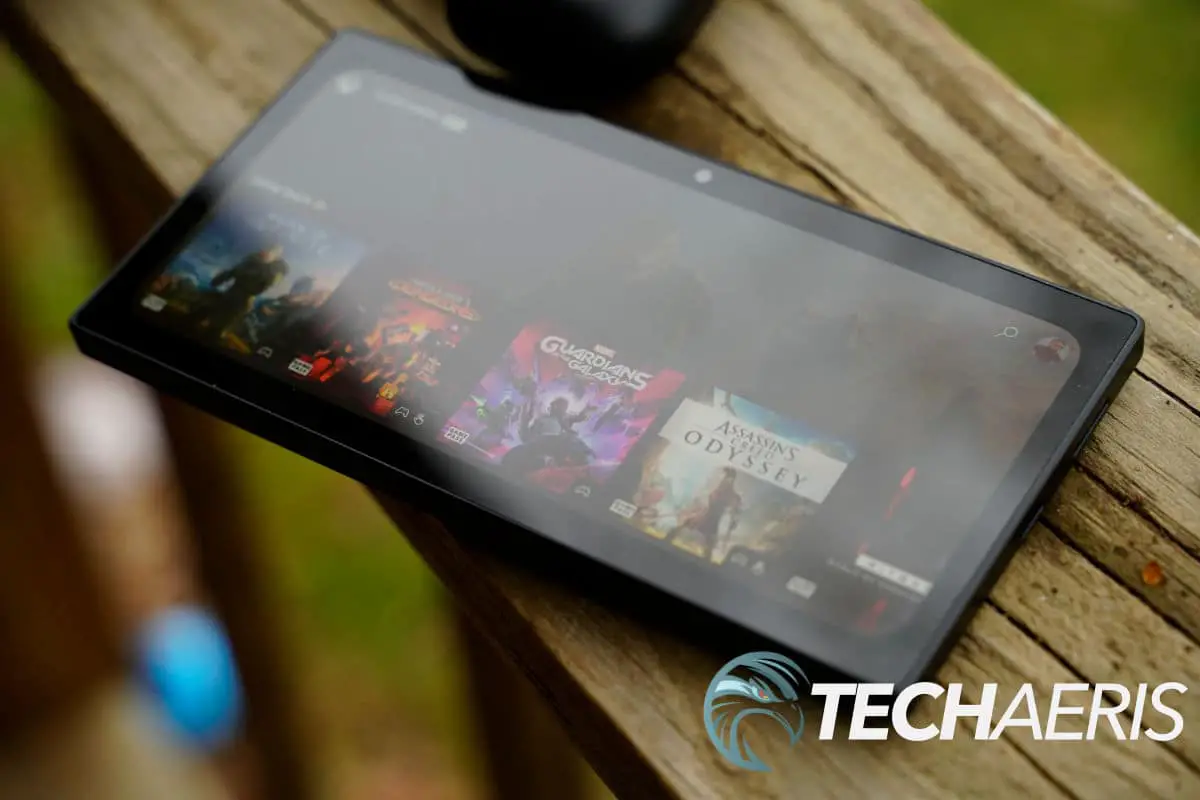
Where the heck do we start with the Razer Edge 5G tablet? It is slightly larger than the Pixel 7 Pro, Samsung Galaxy S23 Ultra, and iPhone 14 Pro Max. Not by much, but it is slightly larger. The display is 6.8″, bigger than the Pixel 7 Pro and iPhone 14 Pro Max and the same size as the S23 Ultra. So if the display is about the same as the big three flagship phones, why is the overall size bigger?
Great question!
Well, firstly, the Razer Edge 5G is not a smartphone. Secondly, the battery is a hefty 5,000 mAH. Only the S23 Ultra can match that. The Pixel 7 Pro and the iPhone 14 Pro Max have around 4,400mAH batteries. Thirdly, the cooling system on the Razer Edge 5G is designed to deal with mobile gaming and needs a bit of space. And finally, the bezels on this thing are ginormous!
I’m trying to be funny with that last statement, but I’m also genuinely curious why the bezels had to be so big. They wanted to fit a 5MP camera into the system but could have done that with thinner bezels. Or make the display a full 7″ instead? Whatever the reason, the bezels make the Edge 5G look a little dated. When you slip the S23 Ultra into the Kishi V2 Pro, it looks sleeker and more modern, but I digress.
Since the Razer Edge 5G is meant to be primarily used in landscape mode, I will describe the device as if you were holding it in landscape orientation.
The power button, volume rocker, and microphone are on the top edge. Microphone number two and the SD Card tray are on the bottom edge of the Edge 5G. One of the stereo speakers and the USB-C port are located on the right edge of the Edge 5G. The other stereo speaker is on the left edge of the Edge 5G. The back has several slots for cooling, and the Razer logo is in the center.
The build quality is fantastic, as it should be. Made up of aluminum and glass, the Edge 5G feels premium. It’s a bit of a struggle to hold it comfortably in hand, but that is not its designed purpose. This was made to be used with the V2 Pro. Though it has a touchscreen, you can play touchscreen games on it, should you wish.
Overall, the Razer Edge 5G is a slightly oversized flagship smartphone with gonzo bezels, a big ass battery, and exceptional cooling for its special guts. I am not a fan of the bezels, but I understand why they are there, and I can accept them as they are. You, too, will come to embrace them as you look past them and into the insanely beautiful 144Hz OLED display… which we’re talking about next!
UPDATE: The CEO of Razer Ming-Liang Tan, took to Twitter yesterday and posted this response to users complaining about the design of the Razer Edge. He makes a good point, and I can understand his perspective.
One of the reasons why we designed the @Razer Edge to be detachable from the Kishi is because I also play a ton of portrait touchscreen Android games like Clash Royale etc. If the controllers were fixed I wouldn't be able to do so.
— Min-Liang Tan (@minliangtan) March 4, 2023
Display
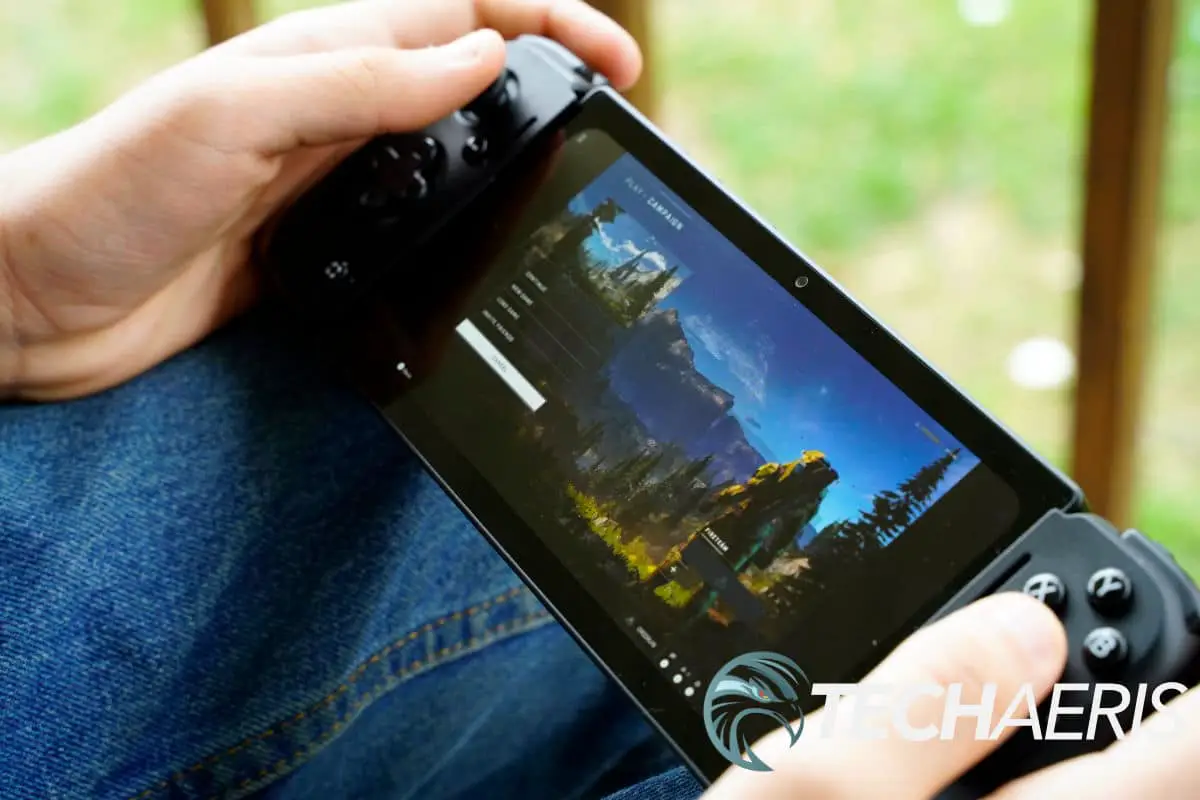
The Razer Edge 5G display is one of the critical factors gamers will be looking to purchase this device. This is a 6.8″ OLED display with a refresh rate of 144Hz. The refresh rate is important to gamers as it is the measurement at which the pixels on the screen move. A higher refresh rate means smoother movement of the content on the screen. This gives a much better experience to the user. The big three flagship smartphone makers all use 120Hz refresh rate screens, which is fantastic, but the 144Hz delivers that little bit extra.
I already mentioned the gonzo bezels; when you first start using the Razer Edge 5G, all you can see are those bezels. As much as they are an eyesore, they fade once you’re immersed in a game on the display. One area that some users have complained about is the 20:9 aspect ratio. I agree that this was a strange choice, given that this device is meant to stream actual 16:9 aspect ratio console-style games from the cloud. Yes, most Android native games fit into the display perfectly, but most streaming games do not.
So the choice of 20:9 was probably wrong, but that doesn’t detract from how lovely the display is. The colors on this thing pop and the blacks are as deep as an OLED can make them, which is black. The refresh rate isn’t automatically set to 144Hz, so you will have to go in and change that, but it will take more battery. With the 144Hz set, games were very fluid, and the only time we had stutter or lag was when we hit poor network connection areas. Taking full advantage of the 144Hz refresh rate means finding games and a service to do that with; you’ll need to look to GeForce Now aside from some Android games.
Overall, in terms of looks. The Razer Edge 5G has a brilliant display with fantastic color depth, impressive black levels, and an excellent refresh rate. On the flip side, you will be playing 16:9 aspect ratio games on a 20:9 aspect ratio device resulting in black bars for many streaming games.
Software/UI
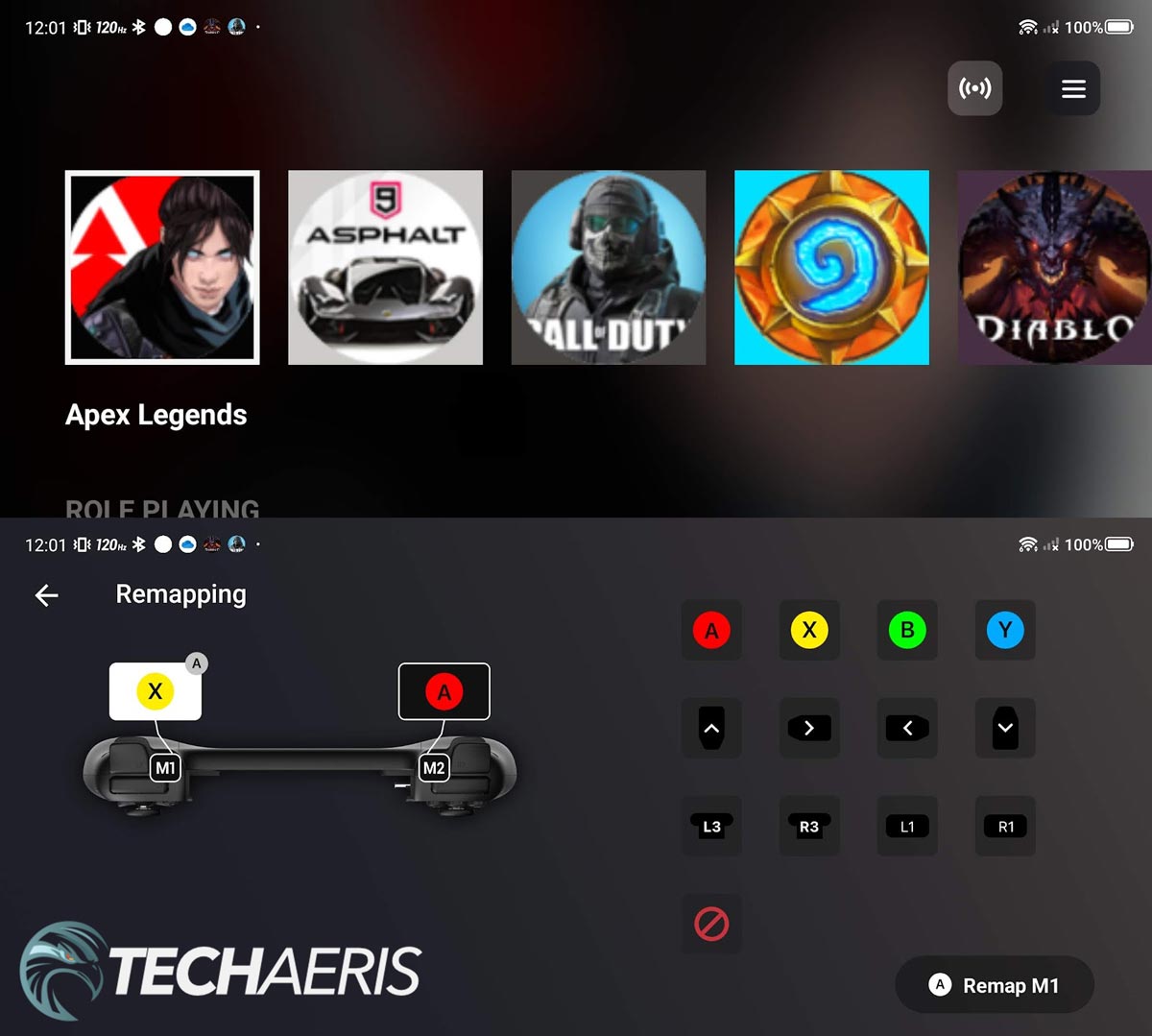
The Razer Edge 5G is running Android 12 and Razer’s Nexus app. There’s not much to say about Android 12; it’s Android and not the latest Android, either. This area concerns me the most with the Edge 5G: the software and security updates.
Software is constantly changing, and the hardware is often left behind. The lingering question I can’t answer is; will this hardware have enough juice to take multiple OS updates in the future? Also, will Razer update the Edge 5G promptly and with the latest versions? Only time will tell.
So the Edge 5G ships to you one version behind on Android, which is not untypical for tablet-like Android devices. Android works fine, the UI is vanilla, and some pre-installed apps are needed to take advantage of cloud gaming services. There’s no bloat or crapware, so well done.
The Razer Nexus app is still a bit disjointed and not as good as other “hubs” from other companies. The app is excellent for re-mapping your buttons if that’s something you need. The haptics are also controlled from the Razer Nexus app, but there is no fan control, some reviewers thought this should be an option, and I don’t disagree.
The cloud gaming apps from Xbox, GeForce Now, Steam, and Epic Games all work as expected, but cloud gaming still has limitations, more on that in the performance section.
Overall, the software and UI will be familiar to most users who have used either Android or iOS. It’s simple, not bloated, and easy to navigate.
Performance and Verizon
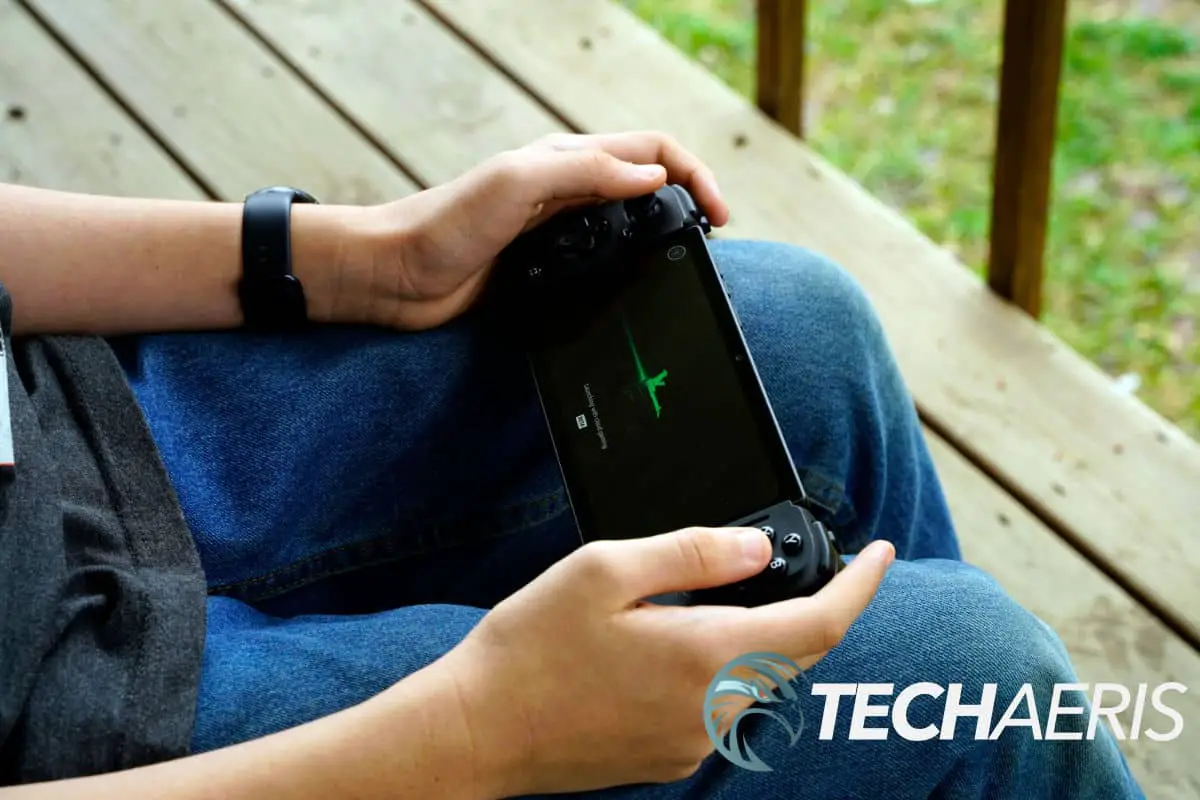
Let’s talk hardware performance first; we will get to network performance soon. The Edge 5G packs the Qualcomm Snapdragon G3x Gen 1 and 8GB of LPDDR5 RAM, making it a hugely capable gaming device. One important note is that the Wi-Fi version only has 6GB of LPDDR5 RAM. That fact is controversial as some users initially believed both versions would have 8GB. So remember that you get 2GB less RAM with the Wi-Fi version.
Combine the new G3x, 8GB of DDR5, and the 144Hz OLED display, and you have significant portable gaming capability. In other words, the Razer Edge 5G is no slouch and perhaps can be called the king of the ring regarding mobile handheld hardware performance. The fans can be noticeable under heavy load, but they aren’t as loud as some reviewers claim, and I concede that it is a subjective opinion. That said, I’d rather the Edge 5G have better cooling than not have it. If that means a little fan noise, so be it. Thanks to this cooling system, the Edge 5G gets less hot than my flagship smartphones while gaming.
Overall, hardware performance is as expected. The Razer Edge 5G is superiorly capable of running all of the gaming platforms it connects to. I found no issues with hardware performance and was delighted with the experience.
As for network performance, Wi-Fi worked great using our Starlink connection. Your results will vary depending on your internet provider.
Mobile network performance is another matter. I know Verizon wants us to believe that 5G is everywhere, and it’s the bee knees. The truth is that 5G is only available in larger cities, and the network is continually being pushed out. I looked for 5G in my area and found a few pockets that supposedly had 5G coverage, but I could not connect to 5G.
If you plan to be mobile with the Razer Edge 5G, you may not have 5G consistently, even in larger covered areas. The mobile network providers want you to believe that 5G is widely available and usable, and there may be pockets here and there, but it’s not always reliable.
That said, I used Verizon 4G LTE most of the time when mobile, and the gaming experience was adequate. I live in a mountainous and hilly area where signals can cut out from one place to another. When I had a solid 4G LTE signal, the gaming experience was decent. When bars went down and the signal was low, everything became laggy, frozen, or forced to restart.
Another consideration is data. We used around 6GB of data on Verizon, which amounted to about 4 hours of playtime. This might have been different with a consistent 5G connection, but I don’t know. So be ready to use data if you’re using a mobile network.
Overall, if you’re not in an area with 5G widely available, you won’t benefit from 5G. Gaming still works with 4G LTE, though, probably not as smoothly, but a solid connection will get you through. Most users will be better served with the Wi-Fi version at a significantly lower cost.
Speakers/Sound
I don’t have much to say in this section; the Razer Edge 5G speakers are outstanding for a mobile device. They are on par with flagship smartphone speakers, but you will get the best experience using the headphone jack or a Bluetooth headset. Still, the speakers are outstanding, and the slits in the Kishi help direct the sound toward you.
Camera
Another category where I don’t have a lot to offer. The Razer Edge 5G has a front 5MP 1080p camera, which I guess they included for things like Zoom, Discord, and live streaming. It works fine, it’s not the best, but I suppose it will work for those who need it. I will give the company credit for at least making it a 1080p resolution.
Battery Life
Like any device, battery life will vary widely on the Razer Edge 5G. I would say that half of the battery life dependency involves the user’s settings and how the device is used. I kept all connections on, brightness to MAX, and refresh rate at 144Hz. I also did not have any battery-saving options turned on. Battery life will also depend on the game you are playing and its load on the device.
In our testing, we figured we were getting about 7-8 hours of gaming time on a Wi-Fi connection and 5-7 hours on a mobile connection. Results will vary with settings; some reviewers have gotten upwards of 10 hours.
I think the battery life is excellent on the Razer Edge 5G. It stands up to flagship smartphones and sometimes may even last longer. The charging time is also a plus; the Edge 5G charges up fast.
One pain point of battery life exists, though, and that’s standby time when docked with the Kishi V2 Pro. The battery is seemingly sapped from the Edge 5G if you leave it on standby with the Kishi attached. Overall, the battery life is acceptable, but don’t leave the two connected on standby for too long.
Razer Edge 5G Gallery
Price/Value
The Razer Edge 5G is priced at $599.99 at Verizon. Of course, Verizon will spread the payments out over time, meaning you don’t have to plunk down six bills upfront. But you will need to pay for the data line for the Edge 5G, and prices vary. Verizon also runs specials, which you will need to check for.
The value is there if you have a consistent 5G connection and can utilize that mobile network fully. But you need to base your purchase on your needs, as my Quick Take stated above.
I think the Razer Edge Wi-Fi at $399.99 is the way to go regarding the value proposition for most users.
Wrap Up
Sometimes you get a device that’s difficult to review. As a reviewer, I want to consider the use case for multiple pools of people, not just my own. I can see why some reviewers advise against buying the Razer Edge, but the device is solid. Yes, you can pursue options that get you close to what the Razer Edge 5G offers, but some users may want a dedicated device like this.
The bottom line is that the Razer Edge 5G is an excellent device in terms of performance and connectivity. But it’s not for everyone, and my advice is to carefully examine your needs against what the Edge offers and does not offer. You may be able to find other ways of filling those needs with the gear you might already have. But it may also tick enough boxes for you to make it worth the buy, and if it does, don’t let anyone tell you it was a wrong choice.
Despite its flaws and potential alternatives, the Razer Edge 5G is good enough to earn a Top Pick Award from me.
In some of our articles and especially in our reviews, you will find Amazon or other affiliate links. As Amazon Associates, we earn from qualifying purchases. Any other purchases you make through these links often result in a small amount being earned for the site and/or our writers. Techaeris often covers brand press releases. Doing this does not constitute an endorsement of any product or service by Techaeris. We provide the press release information for our audience to be informed and make their own decision on a purchase or not. Only our reviews are an endorsement or lack thereof. For more information, you can read our full disclaimer.
Last Updated on March 13, 2024.

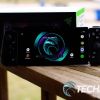
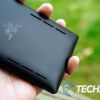
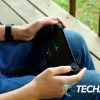
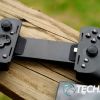





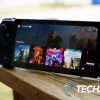
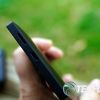


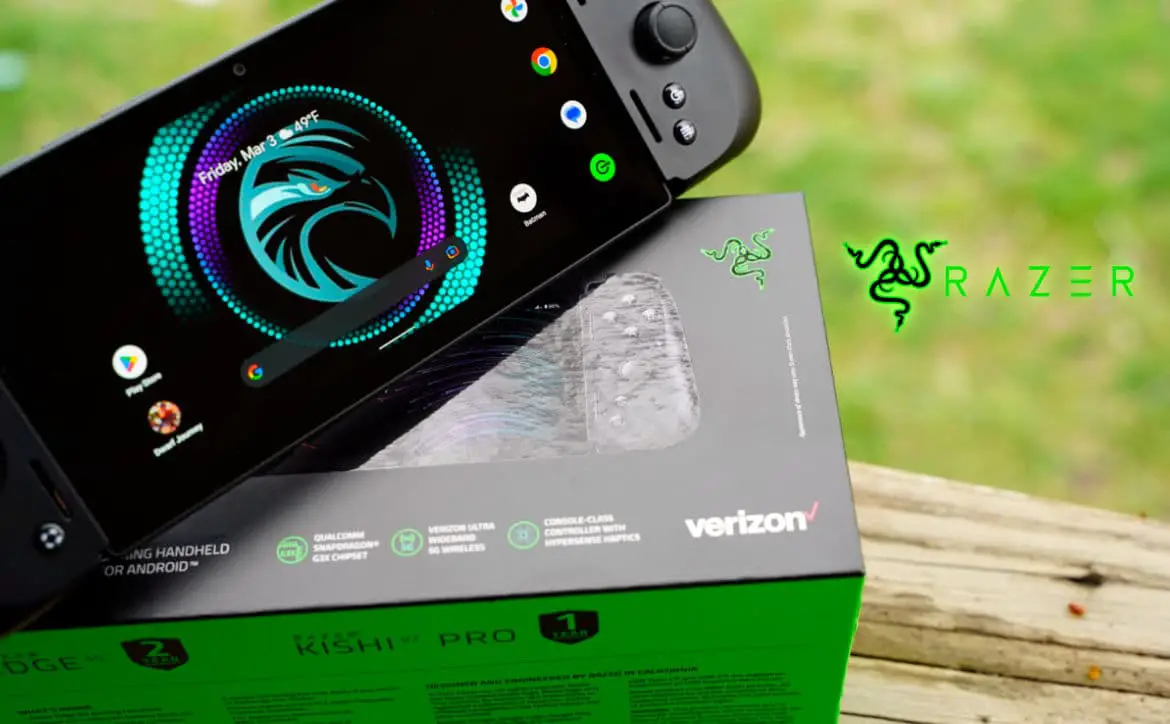









Comments are closed.